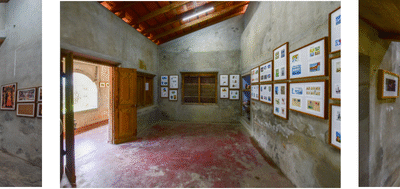News
Southern Market Accounted for More Than Half of Office Space Absorption in 2024, says ANAROCK

New Delhi, March 7, 2025: The year 2024 marked a significant milestone for India’s office market across the top 7 cities, recording the highest net absorption since 2019. The market witnessed robust activity throughout the year, driven by strong occupier demand and strategic expansion plans of various sectors, according to an update of the ANRAOCK Group report ‘India Office Market CY 2024’.
A notable highlight was the net office absorption of nearly 50 million square feet (msf), with southern office markets leading the charge by capturing 55 per cent of the total absorption, followed by western markets at 24 per cent and NCR at 19 per cent. The market fundamentals strengthened considerably in 2024, with average office vacancies dropping to 16.5 per cent from 17.8 per cent in 2023, despite the substantial new supply addition of over 48.1 msf.
Among the top 7 cities, Chennai exhibited the strongest fundamentals with the lowest office vacancy of 9.3 per cent. The southern markets continued their dominant run, contributing 57 per cent of the new supply (approx. 27.7 Mn sf), while the western markets added 30 per cent and NCR comprised 12 per cent of the overall new supply. A significant transformation was observed in the occupier mix during 2024. The IT-ITeS sector’s share in net office absorption decreased to 28 per cent from its earlier dominant position of 42 per cent in 2019. However, this was effectively counterbalanced by the BFSI sector’s expanded presence, growing from 7 per cent to 17 per cent, and the co-working sector maintaining a strong 21 per cent share. The manufacturing sector also showed increased traction, growing to 15 per cent from 10 per cent in 2019, indicating a broader diversification of office space demand.
In terms of rental appreciation, southern markets outperformed other regions significantly. Bengaluru led with a 26 per cent rental growth since 2019, reaching INR 93/sf/month, followed by Chennai at 25 per cent (INR 75/sf/month) and Hyderabad at 20 per cent (INR 67/sf/ month). The western markets showed moderate growth with Pune at 19 per cent and Mumbai at 13 per cent, while NCR registered a 10 per cent increase in the same period. Overall, 2024 emerged as a transformative year for the office real estate market, characterized by robust absorption, strategic expansion by diverse sectors, and strong rental growth across major markets, particularly in the southern region.
Outlook for 2025
The Indian office market is poised to experience positive growth in 2025, driven by multiple favorable factors shaping the commercial real estate landscape. The steady revival of global economies, particularly in the technology sector, is expected to drive renewed demand for office spaces across India’s top 7 cities.
This positive momentum builds upon the market equilibrium achieved in the latter half of 2024, setting a strong foundation for growth. India’s position as a preferred destination for Global Capability Centers (GCCs) continues to be a primary catalyst for office space absorption. Major multinational corporations are strategically expanding their operational presence, drawn by the country’s skilled talent pool and operational cost advantages.
This trend is projected to generate substantial demand for Grade A office spaces in key markets like Bengaluru, Hyderabad, NCR, MMR and Pune. The Real Estate Investment Trusts (REITs) is expected to play an increasingly significant role in shaping the office market landscape in 2025. The growing maturity of Indian REITs, coupled with their strong performance track record, is attracting both domestic and international institutional investors. This institutional capital inflow is likely to enhance the quality of office assets and promote professional management practices across the sector.
The evolution of workplace strategies continues to influence market dynamics. While hybrid work models remain prevalent, organizations are reimagining their office spaces to enhance collaboration, innovation, and employee well-being. This transformation is driving demand for premium office spaces with advanced technological infrastructure and sustainable features. The increasing focus on Environmental, Social, and Governance (ESG) parameters is becoming a decisive factor in corporate real estate decisions, spurring interest in green-certified buildings.
The government’s digital transformation initiatives and the expanding startup ecosystem are creating additional demand vectors. Moreover, the manufacturing sector’s growth, supported by various policy measures, is likely to generate demand for integrated office spaces in industrial parks and special economic zones. However, certain factors warrant attention, including global economic conditions and their potential impact on multinational corporations’ expansion plans. The market’s performance will be influenced by the pace of global economic recovery and its effect on corporate decision making. Despite these considerations, the fundamental drivers of India’s office market remain robust, suggesting a positive outlook for 2025.

 News2 weeks ago
News2 weeks agoInfrastructure Automation Company Enlite Launches World’s First Patented Edge Controller for Intelligent Infrastructure

 News1 day ago
News1 day agoTWH Hospitality Announces Aggressive F&B Expansion Plan with ₹30 Cr Investment

 News2 weeks ago
News2 weeks agoIshara Art Foundation to Present Group Exhibition ‘Amphibian Aesthetics’ at Ishara House in Kochi

 News2 weeks ago
News2 weeks agoGodrej Properties Crosses FY26 Annual Business Development Guidance with Acquisition of 75-acre land parcel in Nagpur

 News3 weeks ago
News3 weeks agoMumbai Returns to Pre-Pandemic Investment Levels, Surpasses $1 Billion 4th Consecutive Year: Cushman & Wakefield

 News3 weeks ago
News3 weeks agoGurugram Premium Segment Drives Projected Rs 6.65 Lakh Crore Market: ANAROCK

 News2 weeks ago
News2 weeks agoReal Estate Investment Momentum in APAC, India to Hold Steady Through 2026: Colliers’ Survey Insights

 News2 weeks ago
News2 weeks agoK2 Infragen Delivers Robust H1 with 76.5% Revenue Growth, 70% Profit Jump



























